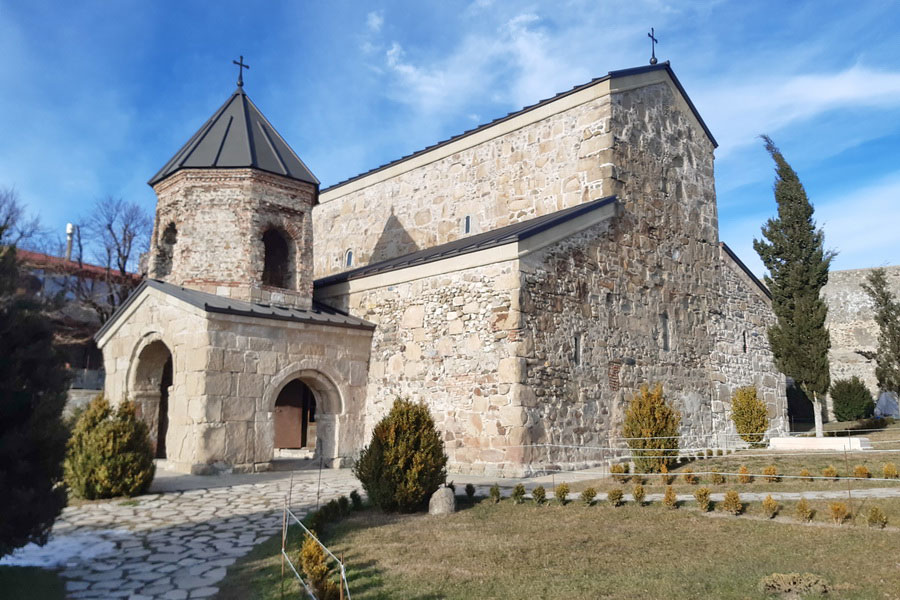
Zedazeni Monastery is one of the oldest monastic complexes in the country of Georgia. This 8th- century historical monument, located in the Saguramo Range in east Georgia, has been recognized as an Immovable Cultural Monument of National Significance since 2007.
History
If legend is true, Zedazeni Mountain was named in honor of Zaden, the pagan god of fruitfulness, after King Parnajom of Iberia (112-99 BC) built a shrine to Zaden on the mountain. The people continued to worship pagan gods until the first half of the 4th century, at which time Georgia officially became a Christian nation.
In 535 AD, a man named Ioane, the leader of 13 Assyrian fathers who traveled from Mesopotamia in order to strengthen Christianity in Georgia, chose to settle on Mount Zedazeni on the very spot where an altar to Zaden once stood. From here, Ioane sent his disciples out into Georgia and arranged for himself a cave chapel where he regularly prayed until his death in 573. After his burial, a church was constructed on the mountain, which unfortunately has not survived to our day.
In the 8th century, local church leader Clementos built St. John the Baptist Church on site and incorporated the tomb of Ioane as part of the cathedral’s northern hall. The church was well fortified and served a defensive function in the Kingdom of Kakheti until the 11th century. It was here in 1101 that David the Builder defeated an army of Seljuk Turks and Kakhetian King Kvirike, after which the victorious king gifted Zedazeni to his devoted comrade, Niania Bakuriani.
The church was devastated in the 17th century after the invasions of Persian ruler Shah Abbas. In the 18th century, the bell tower and monks’ quarters were added to the complex, and later that century St. John the Baptist Church was also rebuilt. Monastic life at the complex was suspended until the 19th century, when Bishop Alexander Okropiridze took the establishment under his patronage. He proceeded to renovate the church, install a new iron roof and create suitable living conditions for the monks.
Zedazeni Monastery was nearly destroyed in the early 20th century, only to be completely renovated decades later. On January 17, 1946, the forests of Zedazeni and the Saguramo Range were declared a state reserve, and today the church complex remains an important link with the nation’s religious past.
Architecture
Zedazeni Monastery complex includes the 8th-century St. John the Baptist Church, a gate with a small belltower, monastic cave cells and a wall encompassing the premise. The brick and cobblestone church is noted for its unadorned exterior, three naves and asymmetrical windows, the largest of which is decorated with a cross relief. The complex wall is also built primarily of cobblestone and chiseled brick and is comparatively new, dating back to the 17th century. The monks’ cells sit farther back from the main complex but are connected by footpaths.
Hiking Opportunities
Zedazeni Monastery is a 35-minute drive from Mtskheta and an hour's drive from Tbilisi. Hidden in a forested mountain area, the monastery affords its visitors a panoramic view of both major cities. There is also a camping area and rest stop ideally situated near the complex, making it a great option for a day hike or an overnight getaway from the city.
The road leading up to the monastery winds through the beautiful forest. If driving, we suggest using a 4WD due to the steep ascent, although it is possible to reach the complex in a regular vehicle in every season save winter. You can also opt to hike to the monastery. The road begins after Saguramo at an elevation of 770 meters and climbs for four kilometers up to 1,200 meters. Be sure to wear comfortable hiking shoes and appropriate clothing for your trek.

